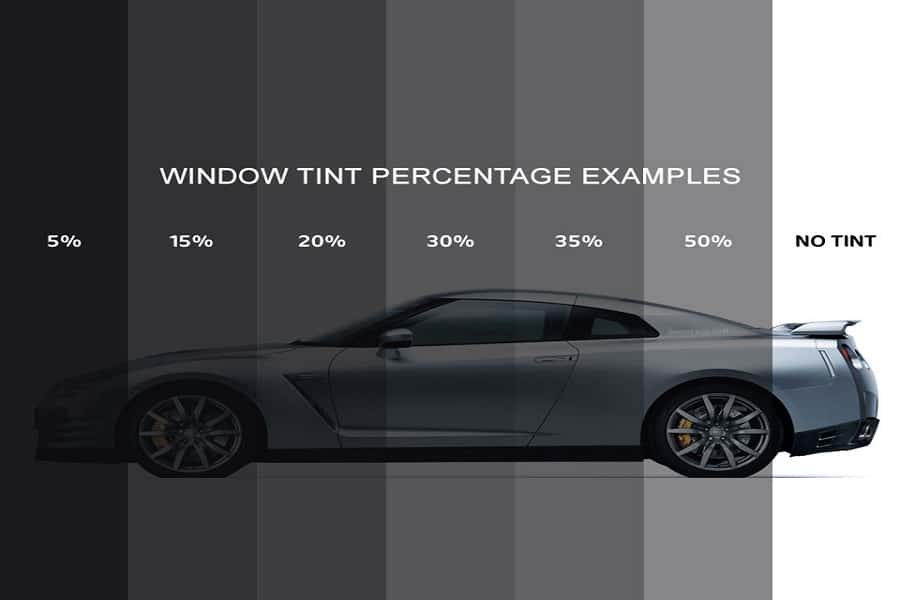

- #Name of device used to measure tinted window percentage driver
- #Name of device used to measure tinted window percentage skin
- #Name of device used to measure tinted window percentage windows
Law Enforcement - Vehicles that are maintained by a law enforcement agency and used for law enforcement purposes. If a motor vehicle is not equipped with such mirrors then the rear window must meet the following standards:īelow are the exemptions to Window Tint requirements. If a motor vehicle is equipped with an outside mirror on each side of the vehicle that reflects to the vehicle operator a view of the roadway for a distance of at least 200 feet from the rear of the vehicle then there are no restrictions regarding the sunscreening devices applied to the rear window. Rear WindowĪ sunscreening device can be applied to the rear window of the vehicle if the following conditions are met.
#Name of device used to measure tinted window percentage windows
These windows are completely exempted from regulation under the Texas Transportation Code. Sunscreening devices, when measured in combination with the original glass, have a luminous reflectance value of 25% or less. Sunscreening devices, when measured in combination with the original glass, have a light transmittance value of 25% or more.
#Name of device used to measure tinted window percentage driver
Sunscreening devices can be applied to the side windows to the right and left of the driver if the following conditions are met. Side Windows to The Right and Left of The Driver Sunscreening devices, when measured in combination with the original glass, must have a luminous reflectance value of 25% or less.Ī clear (un-tinted) UV film is allowed anywhere on the front windshield without a medical exemption being required. Sunscreening devices, when measured in combination with the original glass, must have a light transmittance value of 25% or more. Sunscreening devices may not be red, amber, or blue in color. If there is no AS-1 line, sunscreening devices must end five inches below the top of the windshield. Sunscreening devices must be applied above the AS-1 line. Sunscreening devices can be applied to the windshield if all of the conditions below are met. NOTE: Windows immediately to the right and left of the driver that have less than 25% light transmission will fail inspection, regardless of the model year of the vehicle. These thin, protective layers offer varying degrees of insulation and can be an affordable alternative to replacing existing windows.Window Tint Standards can be found in the Texas Administrative Code, Title 37, Part 1, Rule 21.3. A General Services Administration study estimates an average 29% annual perimeter energy savings with a low-E window film compared to single-pane clear glass windows. Upgrading windows to improve their insulation can therefore have a considerable impact on energy costs. Heat loss and gain through the windows is responsible for 25%-30% of heating and cooling energy use in residential buildings. Depending on the manufacturer, a low-E film might reflect 70%-80% of solar heat in the summer and 50% of interior heat in the winter. They can reflect a great deal of the heat generated on a building’s interior back inside, a desirable quality in colder climates. In warm temperatures, they can prevent outdoor heat from getting inside through the windows. Low-emissivity (low-E) films allow very little heat to pass through the material. To better understand a product’s performance, it’s helpful to look at some more specific metrics.Įmissivity is essentially the insulating quality of a piece of glass or the window film covering it.

For example, if you’re looking to prevent glare or darken an interior space, visible light may be most important to you. While TSER is an excellent general metric to compare films, recognize that this number is a combination of multiple factors, which may hold varying weights for your application. A solar architectural film might reject 68% of visible light, 78% of IR rays and 99% of UV radiation. Because of sunlight’s makeup, these numbers translate to a TSER of 46%.

This metric is helpful for consumers because it accounts for more than just UV light. Total solar energy rejected (TSER) is the percentage of the total solar energy that a tinting system is designed to keep out.

Infrared rays are the primary source of heat in sunlight, so filtering them out improves thermal comfort and reduces air conditioning costs.
#Name of device used to measure tinted window percentage skin
Protecting against UVA and UVB rays helps prevent skin cancer, premature aging and other skin conditions. Window tinting blocks out some visible light, which reduces glare, eye strain and interior fading. Window films block all of these types of energy to some degree and for different purposes. It contains visible light, ultraviolet (UV) light - both UVA and UVB - and infrared rays (IR). The total solar energy is the entire spectrum of the sun’s energy that reaches the Earth’s surface.


 0 kommentar(er)
0 kommentar(er)
